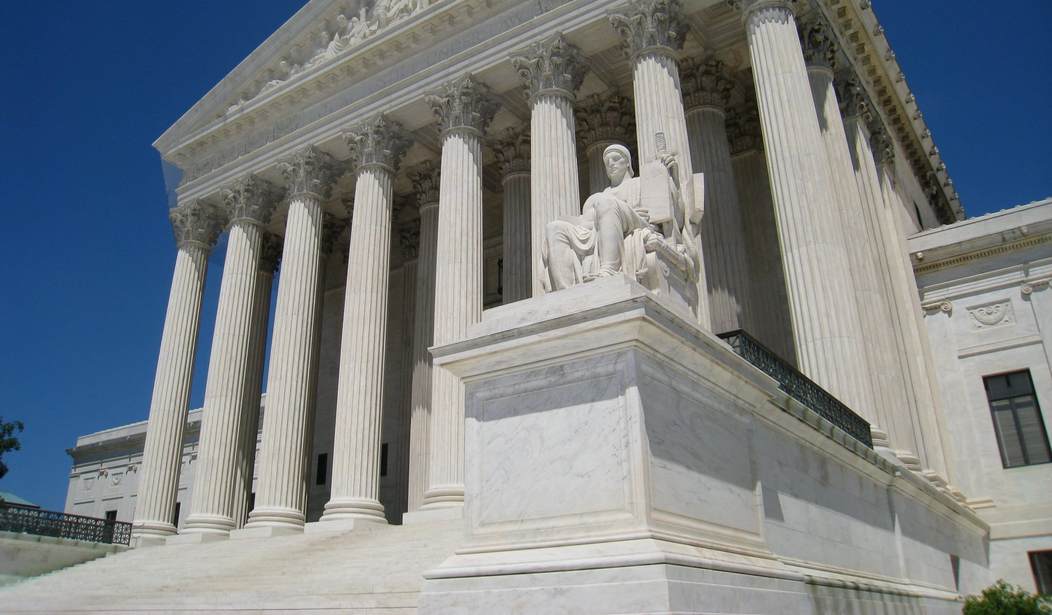On Monday, a Supreme Court ruling on redistricting set Democrats into a tizzy. Protests they had already scheduled for that day gained more meaning as the Court delivered a complex ruling mostly upholding Texas redistricting in Abbot v. Perez.
The Supreme Court upheld maps for Texas’ congressional and state house districts, ruling that most of them were not “tainted” by racial discrimination. It did, however rule that House District 90 was gerrymandered against Latinos.
“Today’s Supreme Court ruling in Texas’ intentional racial redistricting case is a huge wakeup call. The Courts aren’t enforcing Section 2 of the Voting Rights Act, which protects minorities’ right to vote,” Rep. Mark Veasey (D-Texas) tweeted, with the hashtag “RestoreTheVote.”
Today’s Supreme Court ruling in Texas’ intentional racial redistricting case is a huge wakeup call. The Courts aren’t enforcing Section 2 of the Voting Rights Act, which protects minorities’ right to vote. #RestoreTheVote https://t.co/kxzyuGJyDM
— Rep. Marc Veasey (@RepVeasey) June 25, 2018
Democrats had already been planning to launch a “RestoreTheVote” campaign, attacking the Supreme Court ruling in Shelby County v. Holder, which they argue “gutted” the Voting Rights Act of 1965 (VRA).
“Five years ago, the Supreme Court gutted the Voting Rights Act in Shelby County v. Holder,” Rep. Elijah Cummings (D-Md.) tweeted. “Today, the Court struck another blow by upholding racially discriminatory districts in Texas. We must protect our democracy. We must fight to expand voting rights.”
Five years ago, the Supreme Court gutted the Voting Rights Act in Shelby County v. Holder. Today, the Court struck another blow by upholding racially discriminatory districts in Texas.
We must protect our democracy. We must fight to expand voting rights. #RestoreTheVote
— Elijah E. Cummings (@RepCummings) June 25, 2018
The actual Court rulings in both Abbot v. Perez and Shelby County v. Holder are far more complicated than Democrats seem to suggest. The 2013 case struck down Section 4(b) of the VRA, because that section presented a coverage formula that determines which jurisdictions have to be cleared by federal authorities due to their history of discrimination in voting. The Court, in a 5-4 decision, ruled that this section was based on outdated data.
Similarly, Abbot v. Perez set out to balance the Equal Protection Clause of the Fourteenth Amendment (which forbids racial gerrymandering) and Section 2 of the VRA, which mandates that state districting plans provide more “opportunity” for racial minorities “to elect representatives of their choice.”
In order to understand the case, you need to grasp just how complicated the situation is. I’m going to walk you through it. Promise not to get lost?
In 2011, the Texas state legislature approved a redistricting plan that was immediately challenged in the courts and never used. The Texas court drew up interim plans for the state’s primaries, which Texas challenged at the time. The U.S. Supreme Court directed the Texas court to start with the 2011 districting and make adjustments. These new interim plans were implemented and in 2013, the Texas legislature repealed the 2011 plans and enacted the second version of the Texas court plans. Confused yet?
Then, in 2017, the Texas court attacked its own plans as racist against Latinos, claiming that the legislature had failed to cure the “taint” of discriminatory intent allegedly harbored by the 2011 legislature.
So, on Monday, Justice Samuel Alito led the Supreme Court’s conservatives in a ruling, arguing that the Texas court was wrong to require the state to prove it had “purged the ‘taint'” of the defunct and never-used 2011 districting plan.
“Whenever a challenger claims that a state law was enacted with discriminatory intent, the burden of proof lies with the challenger, not the State,” Alito wrote. “In redistricting cases, the ‘good faith’ of the state legislature must be presumed. The allocation of the burden of proof and the presumption of legislative good faith are not changed by a finding of past discrimination, which is but ‘one evidentiary source’ relevant to the question of intent.”
“The evidence in the record is plainly insufficient to prove that the 2013 Legislature acted in bad faith and engaged in intentional discrimination,” Alito added.
Justice Sonia Sotomayor led the four liberal justices in a scathing dissent. “The Court today goes out of its way to permit the State of Texas to use maps that the three-judge District Court unanimously found were adopted for the purpose of preserving the racial discrimination that tainted its previous maps,” she wrote.
In recent cases, the Court has shown a preference for defending redistricting plans crafted by duly elected legislatures. Last week, the Court dismissed two challenges to gerrymandering: it shot down Republican complaints in Maryland and Democrat complaints in Wisconsin. This ruling, complex as it is, fits into that general trend.









Join the conversation as a VIP Member